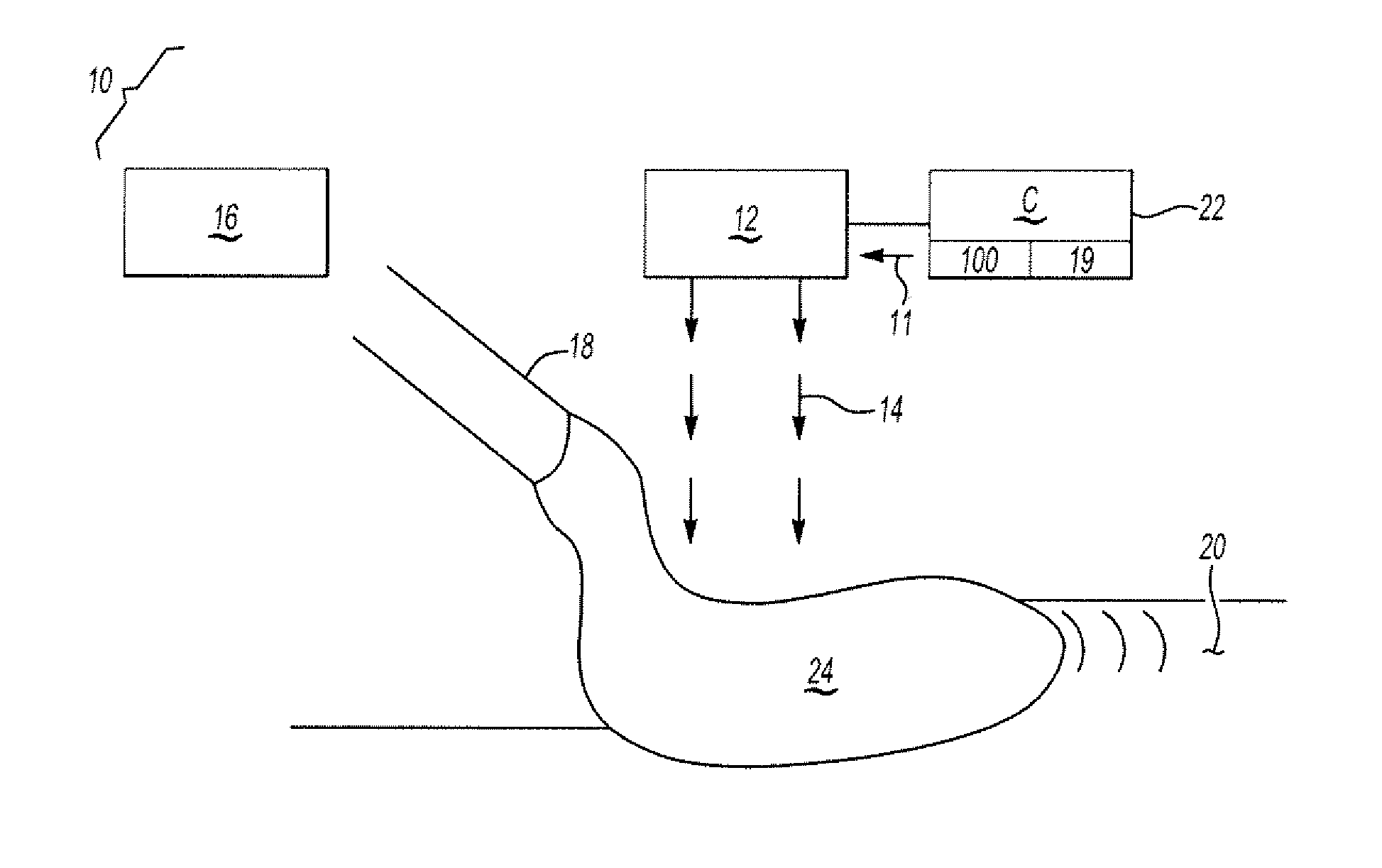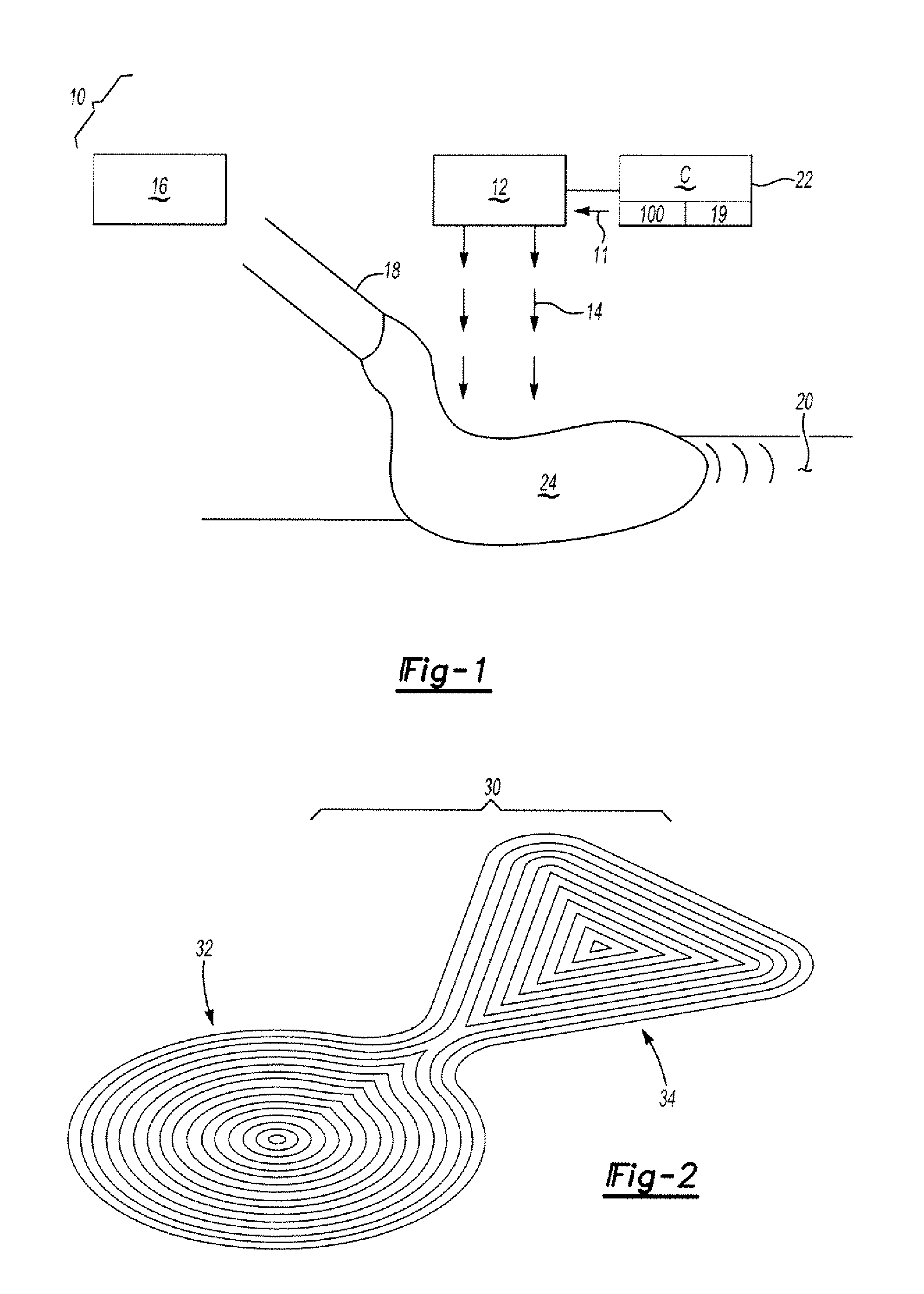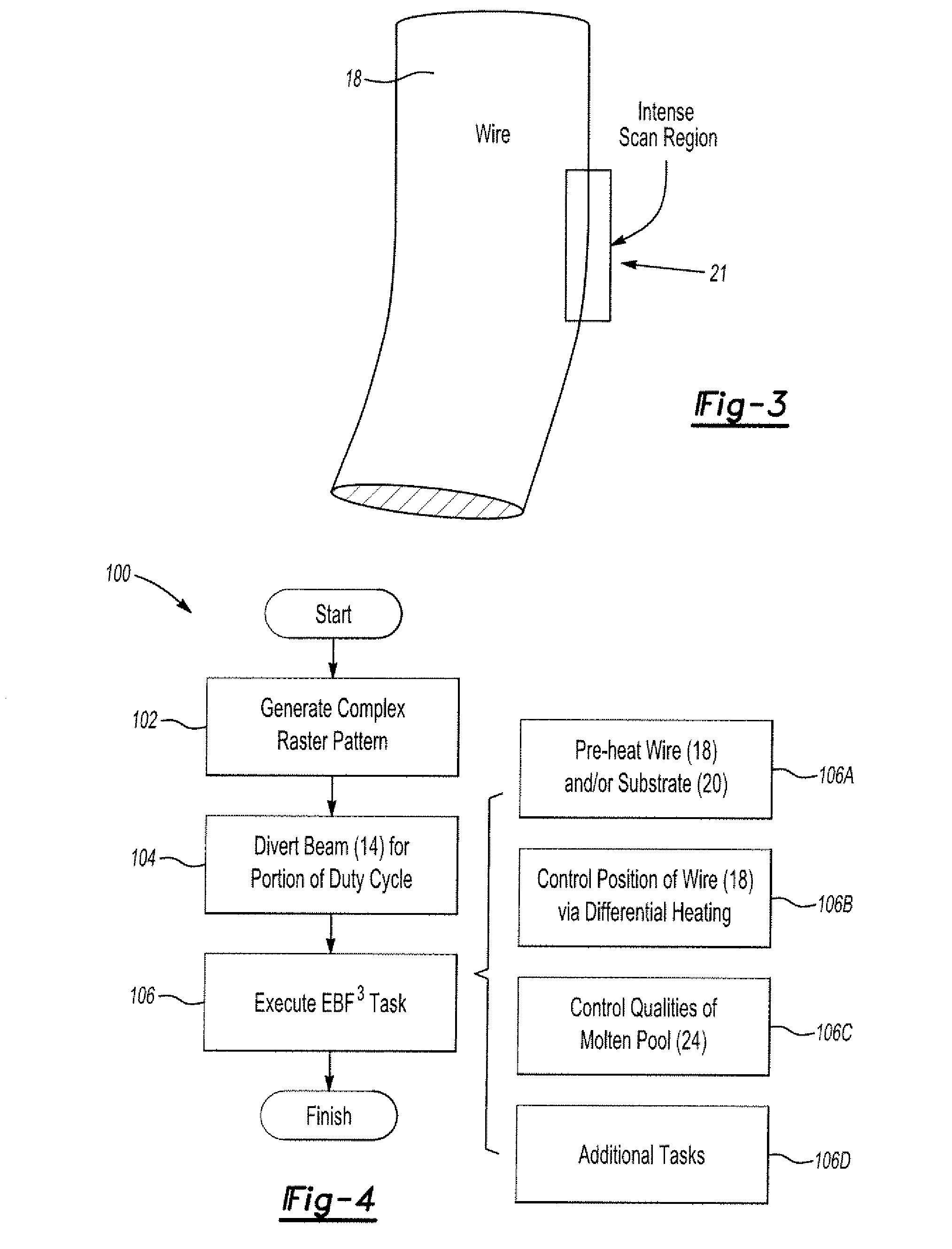Use of beam deflection to control an electron beam wire deposition process
a technology of electron beam wire and electron beam, which is applied in the direction of electro-beam welding apparatus, metal-working apparatus, welding apparatus, etc., can solve the problems of increasing control processing complexity, transient instability and discontinuities of deposited materials, and less than optimal conventional electron beam control methodologies for certain purposes
- Summary
- Abstract
- Description
- Claims
- Application Information
AI Technical Summary
Benefits of technology
Problems solved by technology
Method used
Image
Examples
Embodiment Construction
[0016]Referring to the drawings wherein like reference numbers represent like components throughout the several figures, and beginning with FIG. 1, an apparatus 10 is configured for forming a product using an electron beam 14. Such a process may include beam welding, or, in another embodiment, may include electron beam freeform fabrication, hereinafter abbreviated as EBF3 for simplicity. The apparatus 10 includes an electron beam gun 12 adapted to generate the electron beam 14. While the electron beam 14 is shown external to the electron beam 12 for clarity, those of ordinary skill in the art will recognize a vacuum chamber (not shown) is present within which the electron beam 14 is ultimately generated and contained.
[0017]The apparatus 10 includes a wire feeder 16 adapted for feeding a length of consumable wire 18 toward a substrate 20, and a controller (C) 22. The substrate 20 may be positioned on a moveable platform (not shown), with the platform and / or the gun 12 being movable v...
PUM
| Property | Measurement | Unit |
|---|---|---|
| power | aaaaa | aaaaa |
| dwell time | aaaaa | aaaaa |
| temperature distribution | aaaaa | aaaaa |
Abstract
Description
Claims
Application Information
 Login to View More
Login to View More - R&D
- Intellectual Property
- Life Sciences
- Materials
- Tech Scout
- Unparalleled Data Quality
- Higher Quality Content
- 60% Fewer Hallucinations
Browse by: Latest US Patents, China's latest patents, Technical Efficacy Thesaurus, Application Domain, Technology Topic, Popular Technical Reports.
© 2025 PatSnap. All rights reserved.Legal|Privacy policy|Modern Slavery Act Transparency Statement|Sitemap|About US| Contact US: help@patsnap.com



